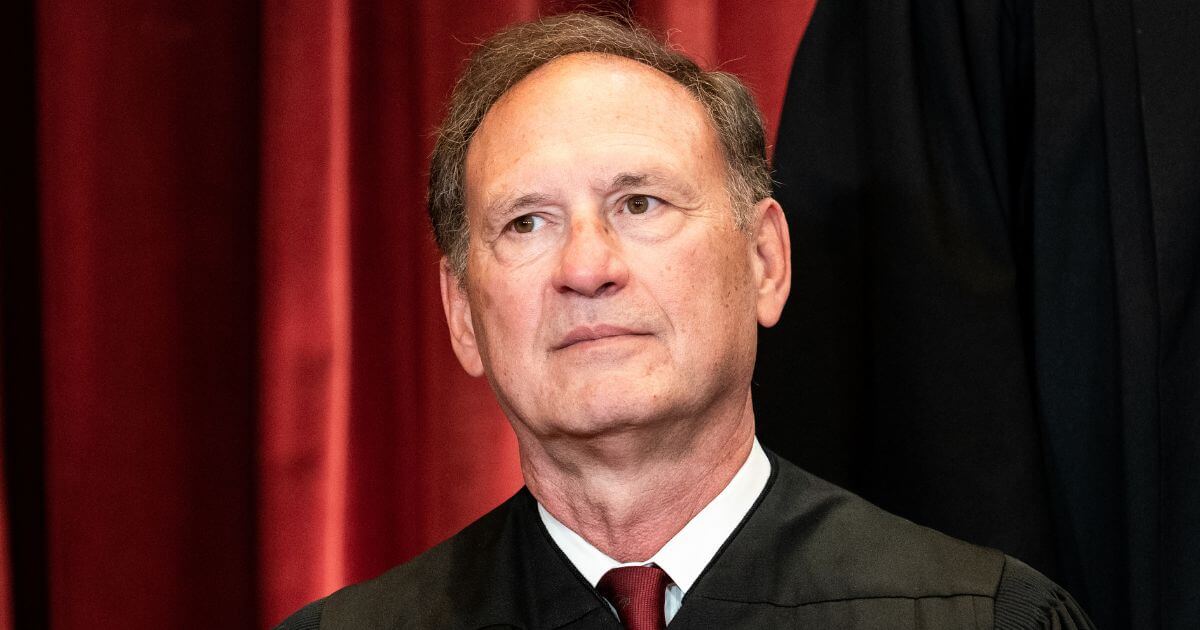If Supreme Court Justice Samuel Alito’s questioning of attorney David Hinojosa, who is defending the University of North Carolina’s use of affirmative action in admissions decisions, had been a chess game, I’m pretty sure the jurist would have announced, “Checkmate.”
Like a tiger toying with a kitten, Alito very efficiently struck what just might have been a death blow to the university’s destructive “race conscious” admissions policy during oral arguments Monday in a lawsuit filed by Students for Fair Admissions.
Plaintiffs in the case say UNC discriminated against white and Asian-American applicants by giving preference to black, Hispanic and Native American ones, The New York Times reported.
Hinojosa defended the university’s admission policies and argued for the “importance of diversity.”
In his questioning, Alito first noted that “the word ‘Asian’ does not appear one time in your brief.” He pointed out the many ways Asian-Americans have been discriminated against throughout U.S. history and asked Hinojosa to comment on how his “arguments impact them.”
“Two points,” the attorney replied. “One is that discrimination against Asian-Americans is wrong. It’s bad. We do not condone it at all.”
His second point: “There were no claims developed by petitioner involving the mistreatment or maltreatment of Asian-American students,” Hinojosa said.
Alito then asked, “So what is your response to the simple argument that college admissions are a zero-sum game, and if you give a ‘plus’ to a person who is an, who falls within the category of underrepresented minority but not to somebody else, you are disadvantaging the latter student?”
“The record actually bears out about how — in this case, how the holistic admissions plan does end up operating,” Hinojosa said. “And it is where an individualized consideration is being made on a student’s own talents, on a student’s own achievements and their own challenges.”
Summarizing the reply, the justice said, “So, you’re saying that race, in and of itself, has no effect in, at the University of North Carolina.”
“Absolutely not, your honor –”
Alito cut him off and sprung a trap. “OK, then you would have no objection to an opinion from this court saying you may not consider race? You may consider other things, but you may not consider the mere fact of race, period? You would have no objection to that?”
Hinojosa was panic-stricken by Alito’s conclusion, naturally, because he was there to defend the use of race in college admissions decisions. He tried to come up with a cogent argument but failed miserably. The damage had been done.
After flailing about, the attorney said, “I do want to make clear that we fully support the limited consideration of race as it has been authorized by this court.”
“I don’t understand your answer,” the justice said. “Either — if it’s irrelevant, then you shouldn’t care whether it’s — it’s ruled out.”
Hinojosa told him, “We certainly believe that race, within the context of an applicant may be considered as a plus factor.”
Alito pounced on the comment. He repeated it and then expanded upon it, concluding, “And, therefore, those who don’t get the plus factor have what is essentially a negative factor.”
“Not, it’s not,” the attorney said, unconvincingly.
Finally, Alito compared UNC’s policy to giving an applicant of black, Hispanic and Native American descent a 5-yard head start — the “plus factor” — over a white or Asian-American applicant in a 100-yard dash.
Hinojosa tried unsuccessfully to counter the analogy, seeing his chances of victory in the case fizzle before his very eyes.
Adam Liptak, the Supreme Court reporter for The New York Times, discussed the timeline for the case in an article Monday. He said that “in the coming days,” the justices “will cast tentative votes at a private conference.”
Typically, Liptak said, a decision is issued about three months after arguments have been made in a case. But, he wrote, “rulings in a term’s biggest cases — and these certainly qualify — tend not to arrive until late June, no matter how early in the term they were argued.”
Given the court’s conservative majority, many are expecting its ruling will put an end to “explicit” affirmative action, meaning applicants may no longer have to “check a box” on an application.
However, Chief Justice John Roberts and Associate Justices Amy Coney Barrett and Brett Kavanaugh expressed support for taking an applicant’s race into consideration via their essays.
NBC News reported that during his questioning of one of the petitioner’s attorneys, Cameron Norris, Roberts asked if it would be “acceptable” for an admissions officer “to take into consideration what an applicant would say in an essay about having to confront discrimination growing up and how he or she did that?”
Both Barrett and Kavanaugh asked similar questions, according to the report.
So, although affirmative action as we know it might end, there will still be ways for a candidate to make his or her race known on an application, and for admissions officers to include race as a factor in their decisions.
Either way, don’t expect a ruling in this case anytime soon.
This article appeared originally on The Western Journal.
